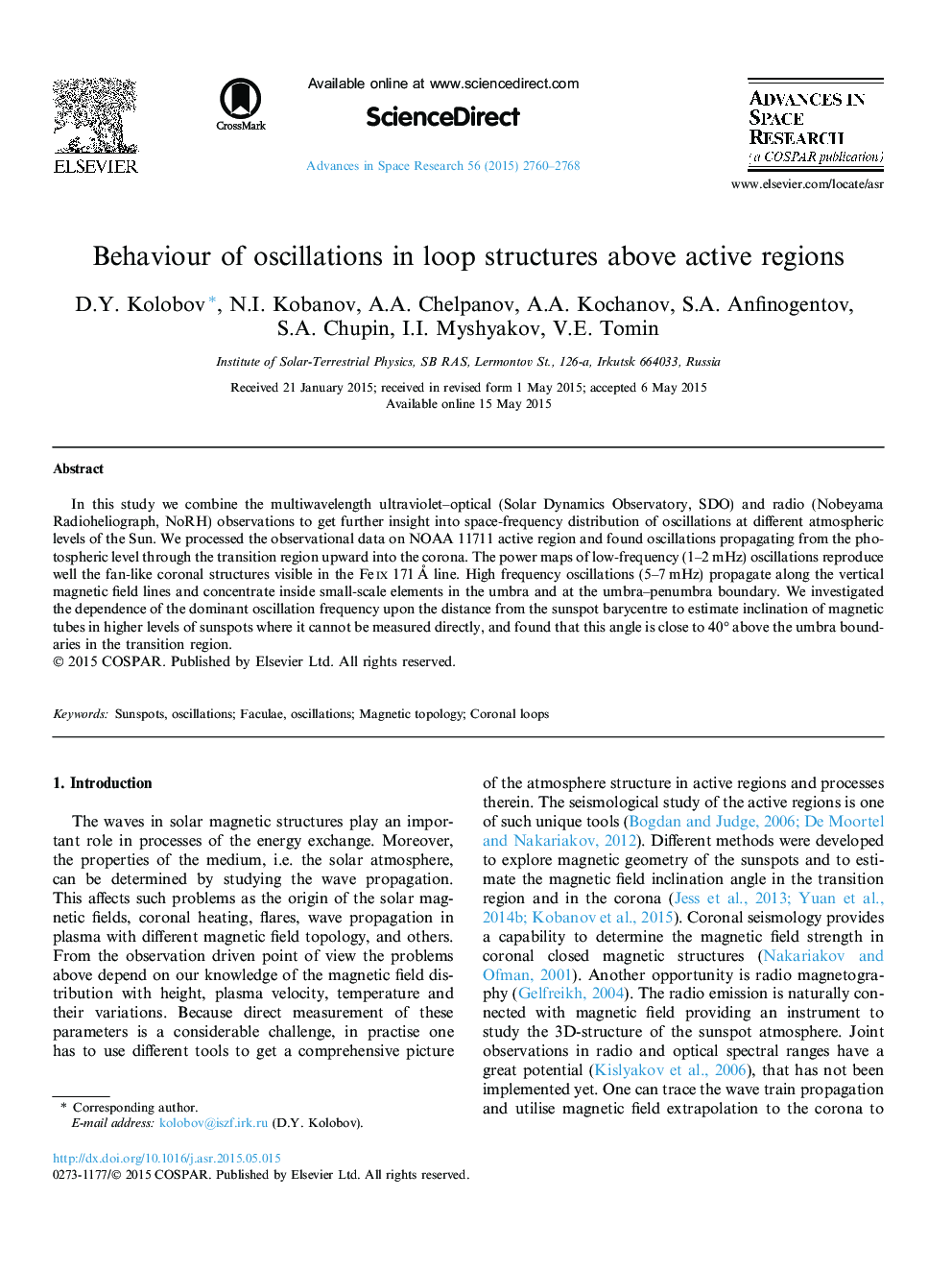| Article ID | Journal | Published Year | Pages | File Type |
|---|---|---|---|---|
| 1763511 | Advances in Space Research | 2015 | 9 Pages |
In this study we combine the multiwavelength ultraviolet–optical (Solar Dynamics Observatory, SDO) and radio (Nobeyama Radioheliograph, NoRH) observations to get further insight into space-frequency distribution of oscillations at different atmospheric levels of the Sun. We processed the observational data on NOAA 11711 active region and found oscillations propagating from the photospheric level through the transition region upward into the corona. The power maps of low-frequency (1–2 mHz) oscillations reproduce well the fan-like coronal structures visible in the Fe ix 171 Å line. High frequency oscillations (5–7 mHz) propagate along the vertical magnetic field lines and concentrate inside small-scale elements in the umbra and at the umbra–penumbra boundary. We investigated the dependence of the dominant oscillation frequency upon the distance from the sunspot barycentre to estimate inclination of magnetic tubes in higher levels of sunspots where it cannot be measured directly, and found that this angle is close to 40° above the umbra boundaries in the transition region.
